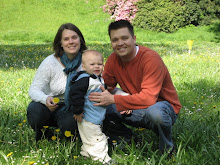So, let the planning begin. Last weekend, we didn’t really have anything on the agenda. We kept talking about doing something, but then, we didn’t do anything to get ready. Nonetheless, with tour book in hand, we made our weekly vigil to the outdoor market tp purchase appleflaps, stroopwafels and the Sunday meal. While munching on the snacks we decided that a Saturday road trip was not in the cards, but instead, we should stay around and tour Den Haag.
So after a yummy lunch of leftover corn chowder, we headed out to find the Mauritshuis, Den Haag’s premier museum. We made it there in perfect timing to the garage closest to the building… and, by the way, felt pretty good about navigating Den Haag successfully for the first time in 2 years (for some reason, we always seem to make a wrong turn).
The Mauritshuis is located inside the Binnenhoff building. This is the old parliament building for the Hague and where the Queen rides her golden coach once a year. It is a really nice setting with lots of trees, ponds and cool architecture. 
The museum was really first class. It is set in an older building that feels like a home more so than a museum. The floors are wooden and the mood is soft. It is well lighted and people move through at a comfortable pace. The art is spectacular. From this visit I really got a good sense of why the Dutch Masters are considered masters. During the 17th century, Holland was a Mecca for new art. It was to Europe what the Renaissance was to Italy. Literally, this small country generated and attracted some of the best artists in the world. The most notable was Rembrandt, but there were many others too --- Vermeer, van der Huygen, etc.
We left the museum and found our way back home. This is one of those trips that makes you feel good --- like you avoided watching college football and sitting on the couch all day. Plus, we were able to keep the Dutch Depression at arm’s length one more day.
On Sunday, we were a bit more ambitious. We decided to take a driving trip into Belgium. Ever since January (when DJ visited) I have wanted to come back to the town called Ypres. When DJ and I visited earlier in the year, the museum we wanted to see was closed. So, on Sunday, Amanda, Jacob, and I decided to make a go at it again.
The drive wasn’t too bad --- approximately 2hrs 15min --- and it wasn’t raining. By northwest European standards that was a success in its own right. The town of Ypres is pretty cool, a little different, but still pretty cool. We made it there around noon and quickly found a restaurant for lunch. In case you haven’t tried it, Flemish food is some of the best in the world. It is very rich, creamy, and unique. The Belgium chefs really know how to pull together a meal. And, this meal was no exception.


 In general, I think the museum did a good job tugging the emotional strings. When we left, Amanda and I turned to each other and both said "that was good". I don't think anyone can be too often reminded of the hellish nature of war.
In general, I think the museum did a good job tugging the emotional strings. When we left, Amanda and I turned to each other and both said "that was good". I don't think anyone can be too often reminded of the hellish nature of war. After the museum we drove to a place call Hill 62. The is a hill on the outskirts of town where the war trenches are actually preserved.
After the museum we drove to a place call Hill 62. The is a hill on the outskirts of town where the war trenches are actually preserved.


 A bunch of old equipment that has been excavated from this site.
A bunch of old equipment that has been excavated from this site. 
 A dummy used to trick the enemy during the war. They would use this mannequin to draw the enemy fire and give up their position. This one survived; it did better than 9 million other people during the war.
A dummy used to trick the enemy during the war. They would use this mannequin to draw the enemy fire and give up their position. This one survived; it did better than 9 million other people during the war. 
No comments:
Post a Comment